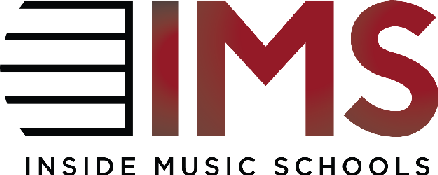The first entry in a two-part series about the cost of your music degree.
By: Dr. David Fish
Originally posted to In-Tune Monthly.
For many students, the investment in a college education is one of the largest they’ll ever make. Financial institutions, the government, and schools themselves continue to offer ways in which more students can afford higher education. And, while our music college contacts have weighed in on the subject, paying for a college education today knows no one major or educational category.

“In today’s economy, higher education is no longer a luxury for the privileged few, but a necessity for individual economic opportunity and America’s competitiveness in the global economy.”
To substantiate the aforementioned assertion made by the U.S Department of Education, the DOE points out that three out of four fastest-growing occupations require more than a high school diploma. There is undoubtedly lots of individual motivation for getting a college education. A person with a bachelor’s degree can expect to make 66% more than someone with only a high school diploma. That amounts to about a million dollars over a lifetime.
So, why then do less than half of young Americans go to college, and why do less than half of those graduate? Several factors play a role, but cost stands as one of the most significant. It has gotten worse over the years, with the increase in college tuition far outpacing inflation. The cost of higher education has gone up more than 1200% since 1980. In 2020, the average annual undergraduate tuition at a public university stood at over $9000. Undergraduate students at private institutions paid far more the same year. Their annual tuition averaged $34,000. That does not factor in other costs associated with college study, such as room and board. Total everything up, and a person can graduate from university with a diploma, but also a six-figure student-loan debt.
Why is College so Expensive?
Why does college tuition cost so much, and why does it continue to go up?
We can attribute several factors. They include institutional expenditures such as instruction, administrative support, student services, operations, and maintenance. Technology reigns as one of the most significant factors. A generation ago, technology at school meant a telephone in your dorm room. Today’s students require unlimited broadband internet access across campus and connected classrooms with full-time tech support. A competitive college environment also values a certain experience in other ways as well, like made-to-order cuisine instead of long cafeteria lines serving institutional grub. The upgrades cost money.
Other factors have contributed to the spike in college costs. Some states have decreased their funding to public schools and tuition compensation for private institutions. At the same time, demand for a college education has soared, up over 25% since 2000. Surprisingly, subsidized federal student loans have even increased the cost of tuition, going up $0.60 for every dollar in aid.
Getting Better
Fortunately, what had long been a discouraging picture concerning the rise in the cost of a college education seems to be improving. 2020 witnessed the smallest year-over-year increase in college tuition and fees in many years. The federal government may also be coming to the rescue. If elements of the bill are ever signed into law, the “College Affordability Act” could lower the cost of college for students and their families. It would hold “schools accountable for students’ success” and expand “opportunity for students from all backgrounds by providing flexible college options and stronger support to meet students’ individual needs.”
If Congress decides to revisit this, The College Affordability Act would be in addition to programs the federal government already has to help students pay for school. For example, the Federal Pell Grant Program “provides need-based grants to low-income undergraduate and certain post-baccalaureate students to promote access to post-secondary education.” Some colleges, educational organizations, states, and even cities make college more affordable. A couple of notable examples are the Freshman Year for Free program of the Modern States organization and the Kalamazoo (MI) Promise which pay up to 100% of tuition at in-state public community colleges or universities for students who graduate from public schools in that city.
Individual schools also do what they can to minimize the cost of attendance. Beth Weiss, Oberlin College and Conservatory Director of Conservatory Admissions and Enrollment Management notes that her institution “meets 100% of a family’s demonstrated need with financial aid packages that keep their loan burden low.” For its part, Columbia College Chicago has increased the number of courses students can take each semester, making it possible to graduate more quickly. According to Micah Jones, Dean, School of Music, University of the Arts, “UArts has created 0pportunities for highly motivated students to maximize their tuition dollars by pursuing a dual degree (BM in Performance or Music Composition and a BS in Music Business, Entrepreneurship, and technology [MBET]) program prior to enrolling in a one-year MAT program in Music Education. The completion of these two bachelors and one master’s degrees can be accomplished in a minimum of 5 years total.”
“Young people face all kinds of challenges and being able to dream about a college education should be accessible to everyone. Unfortunately, there are still old school educators who think some don’t ‘deserve’ to be at college or ‘it’s just not possible’ – but why? We all expect to live in an equal world, so that should include education. DIME is 60% first generation and we are proud of that. Many students struggle to find the funds to attend, even though the programs are much more affordable than many private schools. There is an upfront investment for music programs including facilities, equipment, and sound proofing etc., but no more than many other programs, especially as technology develops and you don’t need Neve desks to teach music recording or production! We need to break down the barriers in traditional programs and embrace the fact that music is for all, regardless of the genre. There will always be students who want to study classical and jazz, and there are students who want to study rap, pop and rock – we need to cater to both.”
Sarah Clayman, Managing Director, DIME Group.
What can YOU do about this?
Check back to follow our Part II, where we take a look at what YOU can do to make college more affordable, especially if you do not live in any of the areas where the programs we outlined are offered.
Continue to follow Inside Music Schools for more content like this!
About the Author

Dr. David Lee Fish, Ph.D., founded and continues to direct the degree concentration in popular music as a tenured professor at Catawba College in Salisbury, North Carolina. In that role, he has gained expertise in a range of subjects, including music business, technology, and theory. He also co-founded and is a past president of the Association for Popular Music Education, the leading professional organization for educators in that field. His participation has helped him forge relationships with fellow faculty of popular music across the country and intimate knowledge of their programs.
Contact Us
Did you find this blog helpful? Do you picture yourself in a music career? If the answer to that is a “yes”, your next step is simple. Contact insidemusicschools.com and allow our team of industry insiders to guide you toward your goal of being a professional in the music industry. Through expert counseling and real world experience, we will make sure you are prepared for the journey
Founder & President at Inside Music Schools | Insidemusicschools.com
Head of admissions and faculty member at Berklee College of Music for 40 years, Steve Lipman and our team at Inside Music Schools speak music as their primary language. We approach each client contact with open eyes, ears, and minds. As the country’s premier music school consultant, he has advised students from the United States, Canada, the U.K., India, Singapore, Dubai, China, Australia, Turkey, Colombia, Argentina, Brazil, Japan, Israel, Italy, Russia and elsewhere.


